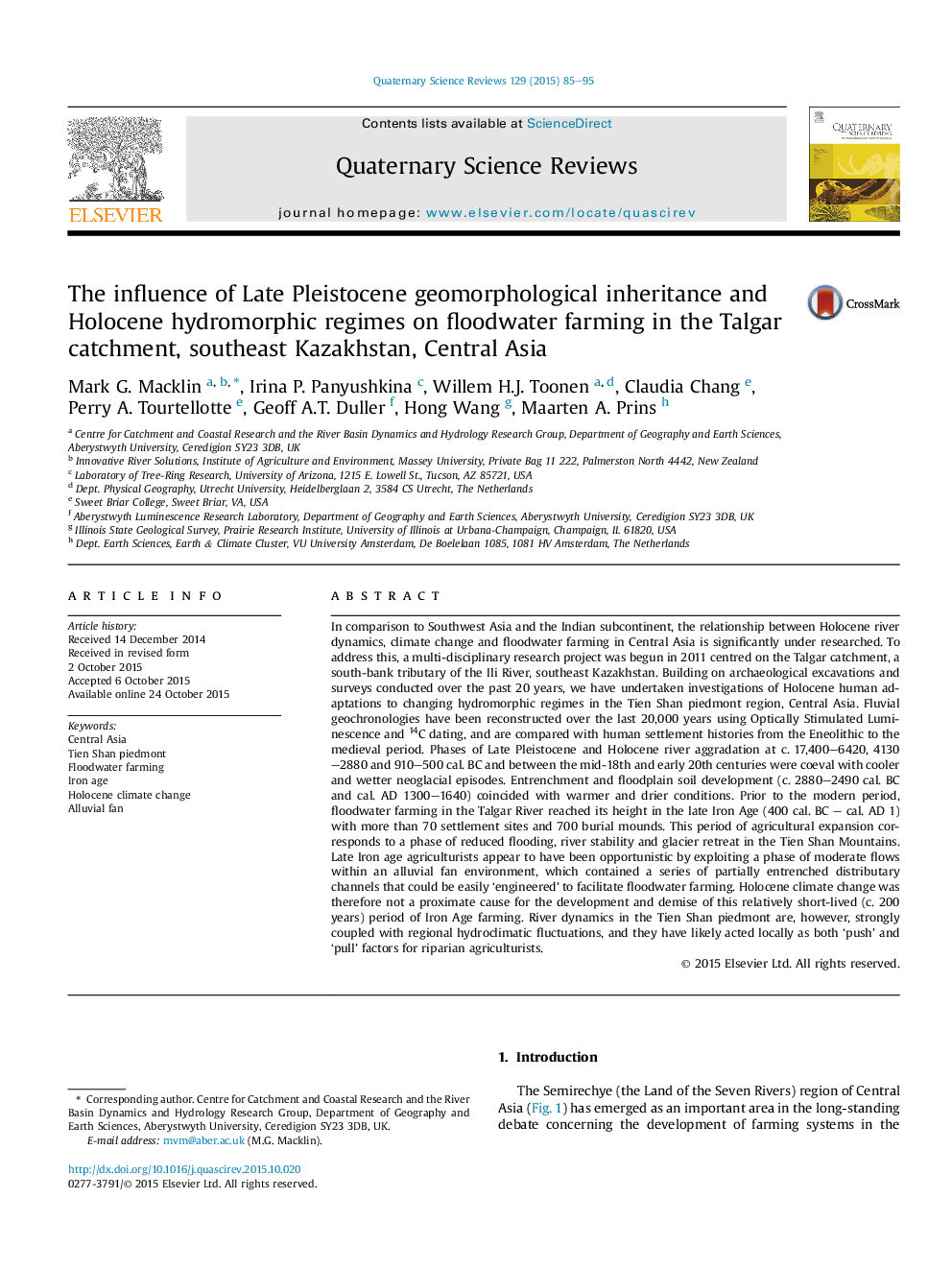| کد مقاله | کد نشریه | سال انتشار | مقاله انگلیسی | نسخه تمام متن |
|---|---|---|---|---|
| 6446659 | 1640805 | 2015 | 11 صفحه PDF | دانلود رایگان |
عنوان انگلیسی مقاله ISI
The influence of Late Pleistocene geomorphological inheritance and Holocene hydromorphic regimes on floodwater farming in the Talgar catchment, southeast Kazakhstan, Central Asia
ترجمه فارسی عنوان
تأثیر ارکان ژئومورفولوژیکی پسا پلیست اتن و رژیمهای هیدرومورفولوژیک هولوسن بر کشاورزی سیلاب در تالاب، جنوب شرقی قزاقستان، آسیای مرکزی
دانلود مقاله + سفارش ترجمه
دانلود مقاله ISI انگلیسی
رایگان برای ایرانیان
کلمات کلیدی
آسیای مرکزی، تین شان احمدی، کشاورزی سیلاب، عصر آهن، تغییرات آب و هوایی هولوکسی، فن آلوویو،
موضوعات مرتبط
مهندسی و علوم پایه
علوم زمین و سیارات
زمین شناسی
چکیده انگلیسی
In comparison to Southwest Asia and the Indian subcontinent, the relationship between Holocene river dynamics, climate change and floodwater farming in Central Asia is significantly under researched. To address this, a multi-disciplinary research project was begun in 2011 centred on the Talgar catchment, a south-bank tributary of the Ili River, southeast Kazakhstan. Building on archaeological excavations and surveys conducted over the past 20 years, we have undertaken investigations of Holocene human adaptations to changing hydromorphic regimes in the Tien Shan piedmont region, Central Asia. Fluvial geochronologies have been reconstructed over the last 20,000 years using Optically Stimulated Luminescence and 14C dating, and are compared with human settlement histories from the Eneolithic to the medieval period. Phases of Late Pleistocene and Holocene river aggradation at c. 17,400-6420, 4130-2880 and 910-500Â cal. BC and between the mid-18th and early 20th centuries were coeval with cooler and wetter neoglacial episodes. Entrenchment and floodplain soil development (c. 2880-2490Â cal. BC and cal. AD 1300-1640) coincided with warmer and drier conditions. Prior to the modern period, floodwater farming in the Talgar River reached its height in the late Iron Age (400Â cal. BC - cal. AD 1) with more than 70 settlement sites and 700 burial mounds. This period of agricultural expansion corresponds to a phase of reduced flooding, river stability and glacier retreat in the Tien Shan Mountains. Late Iron age agriculturists appear to have been opportunistic by exploiting a phase of moderate flows within an alluvial fan environment, which contained a series of partially entrenched distributary channels that could be easily 'engineered' to facilitate floodwater farming. Holocene climate change was therefore not a proximate cause for the development and demise of this relatively short-lived (c. 200 years) period of Iron Age farming. River dynamics in the Tien Shan piedmont are, however, strongly coupled with regional hydroclimatic fluctuations, and they have likely acted locally as both 'push' and 'pull' factors for riparian agriculturists.
ناشر
Database: Elsevier - ScienceDirect (ساینس دایرکت)
Journal: Quaternary Science Reviews - Volume 129, 1 December 2015, Pages 85-95
Journal: Quaternary Science Reviews - Volume 129, 1 December 2015, Pages 85-95
نویسندگان
Mark G. Macklin, Irina P. Panyushkina, Willem H.J. Toonen, Claudia Chang, Perry A. Tourtellotte, Geoff A.T. Duller, Hong Wang, Maarten A. Prins,
